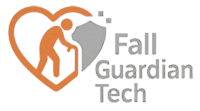To determine whether an older adult faces an elevated risk of accidental falls, a systematic assessment approach is essential—starting with rapid screening and progressing to comprehensive evaluation when needed.
⚡ 1. Quick Screening & Initial Identification
Begin by asking these key questions:
- Has the individual fallen 2+ times in the past year?
- Do they feel unsteady or struggle with balance?
- Are there symptoms of injury or acute illness?
**→ If “yes” to any**, proceed to a full fall-risk assessment .
🔍 2. Comprehensive Risk Assessment
For high-risk individuals, evaluate these critical dimensions:
🧩 A. Health History & Baseline Profile
- Demographics: Age (especially ≥75), gender, and ethnicity .
- Fall history: Document prior falls—context, location, injuries, and triggers .
- Medical conditions: Screen for:
- Neurological: Stroke, Parkinson’s, neuropathy.
- Musculoskeletal: Osteoporosis, arthritis, prior fractures.
- Cardiovascular: Orthostatic hypotension, arrhythmias.
- Vision/Hearing: Cataracts, glaucoma, macular degeneration .
- Medications: Flag sedatives, antidepressants, diuretics, or antihypertensives that cause dizziness/drowsiness .
🧪 B. Physiological Function Tests
- Cardiovascular: Check orthostatic vital signs (blood pressure/heart rate when lying/standing) .
- Vision/Hearing: Assess acuity and field deficits .
- Mobility & Balance:
- Timed Up-and-Go (TUG) Test (>12 seconds indicates risk) .
- 30-Second Chair Stand Test: <19 reps (men) or <16 reps (women) signals leg weakness .
- Functional Reach Test: <25 cm predicts imbalance .
- Single-Leg Balance: Inability to hold ≥5 seconds suggests high risk .
🏠 C. Environmental & Behavioral Review
- Home hazards: Check for poor lighting, wet floors, loose rugs, clutter, or missing handrails (70% of falls occur at home) .
- Footwear/Clothing: Assess for improper fit or non-slip soles .
- Behavior: Note rushing, multitasking, or skipping assistive devices .
🧠 D. Cognitive & Psychological Factors
- Cognition: Use MMSE or MoCA to screen for impairment affecting judgment .
- Fear of falling: Evaluate if anxiety restricts activity → accelerates muscle loss .
